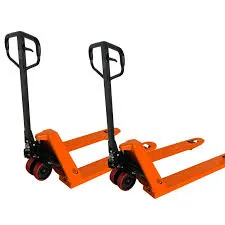


Understanding Chain Blocks and Lever Blocks A Comprehensive Guide
In the realm of lifting and rigging equipment, chain blocks and lever blocks serve as essential tools designed to facilitate various industrial operations. Both of these mechanisms provide solutions for lifting heavy loads, ensuring efficiency and safety in the workplace. This article aims to delve into the characteristics, functionalities, and distinctions of chain blocks and lever blocks, helping users choose the right equipment for their specific needs.
What is a Chain Block?
A chain block, often referred to as a block and tackle, consists of a pulley system that uses a chain to lift heavy objects. The main components include the chain, sheaves (or pulleys), and a hoisting mechanism. Chain blocks are typically operated by pulling on the free end of the chain, which wraps around the sheaves. This mechanical advantage allows an operator to lift loads that would otherwise be too heavy to handle.
Chain blocks are widely used in construction, manufacturing, and warehouse operations due to their robustness and ability to lift loads ranging from a few hundred kilograms to several tons. They are often made of high-strength steel, ensuring durability and reliability even in demanding environments.
What is a Lever Block?
The lever block, also known as a lever hoist or ratchet lever hoist, operates on a different principle. Instead of using a chain to pull the load, it employs a lever for lifting. When the operator pulls the lever down, the ratchet mechanism engages and lifts the load upward. Lever blocks also feature a hook or eye at the top to attach to an anchor point and are commonly equipped with a safety catch to prevent accidental disengagement.
Lever blocks are particularly advantageous in tight or confined spaces where a chain block's operation might be limited. They can provide a significant amount of lift with a minimal amount of effort, making them favorable for applications where fine control and positioning are required. The load capacity of lever blocks typically ranges from a few hundred kilograms to several tons, similar to chain blocks.
Key Differences Between Chain Blocks and Lever Blocks

While both chain and lever blocks serve similar functions in lifting tasks, they have distinct operational methods and use cases
. Here are some key differences1. Operation Method Chain blocks rely on the operator pulling a chain, whereas lever blocks utilize a lever mechanism. This can determine which device is more suitable depending on the available space and the operator's physical strength.
2. Mechanical Advantage Chain blocks generally offer more significant mechanical advantage, meaning they can lift heavier loads with less effort. Lever blocks, while effective, require more consistent physical effort from the operator.
3. Versatility and Control Lever blocks provide finely-tuned control over the load’s position, making them more suitable for applications requiring precise lifting and positioning. On the other hand, chain blocks are often preferred for lifting vertical loads quickly and efficiently.
4. Installation and Mobility Chain blocks tend to be stationary, often mounted on a beam or gantry, whereas lever blocks are portable and can be easily used in various locations without the need for additional fixtures.
5. Safety Features Both systems have safety features, but the ratchet mechanism in lever blocks provides a certain level of security against accidental load drops, which can be especially crucial in high-stakes environments.
Conclusion
In summary, both chain blocks and lever blocks are invaluable tools in the lifting and rigging industries. Understanding their functionalities, benefits, and operational differences is crucial in selecting the appropriate equipment for specific tasks. The choice between a chain block and a lever block ultimately depends on factors such as load capacity requirements, working environment, and the nature of the lifting task. By considering these aspects, users can ensure safe, efficient, and effective lifting operations across various applications.



